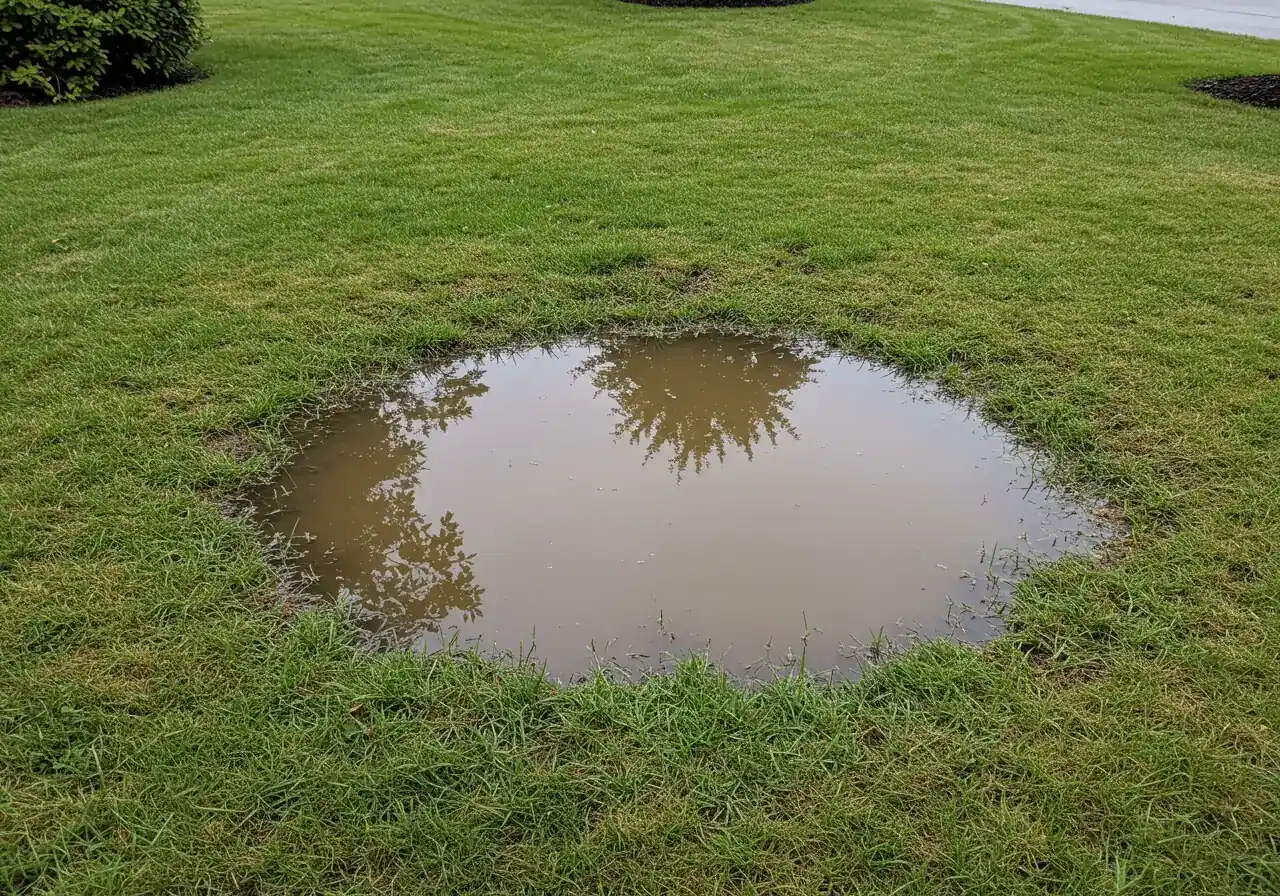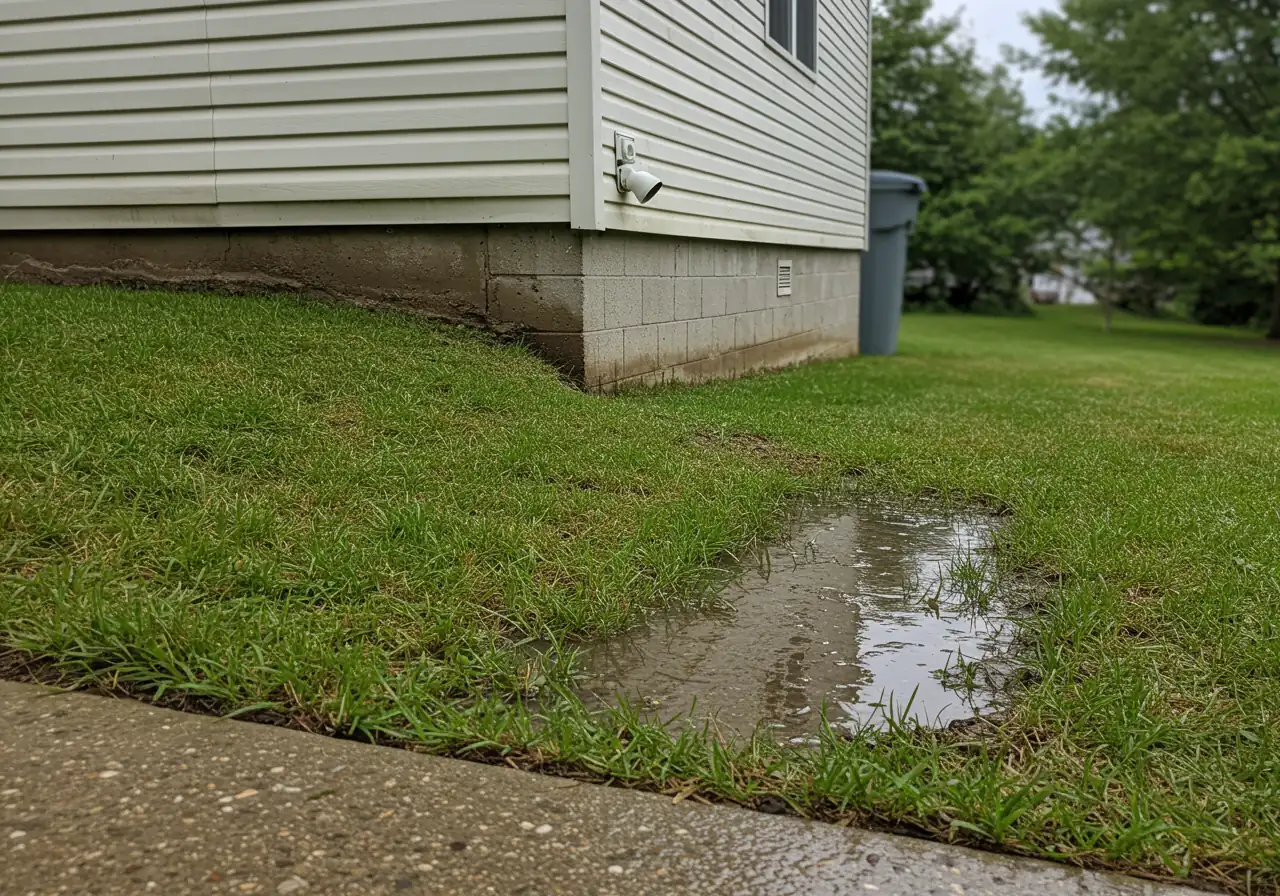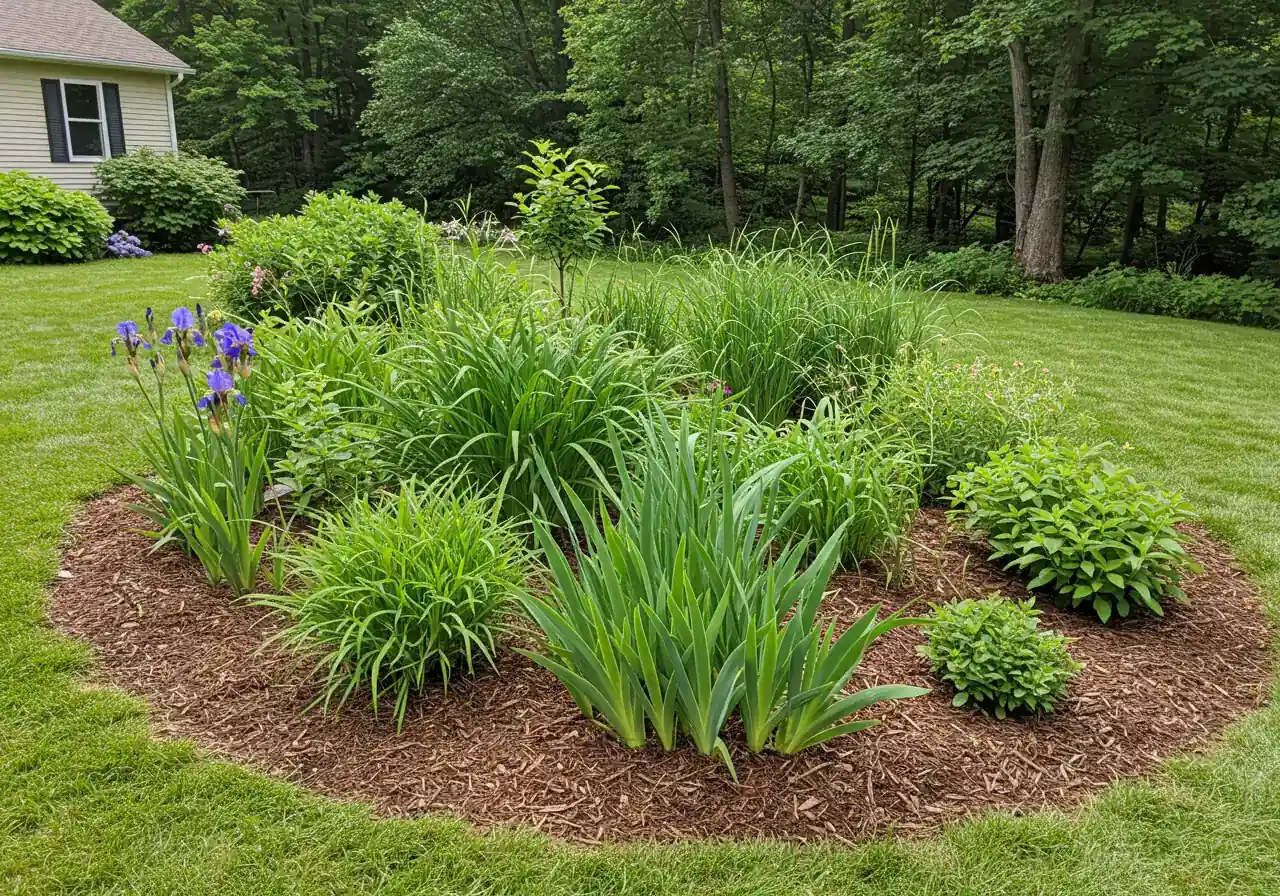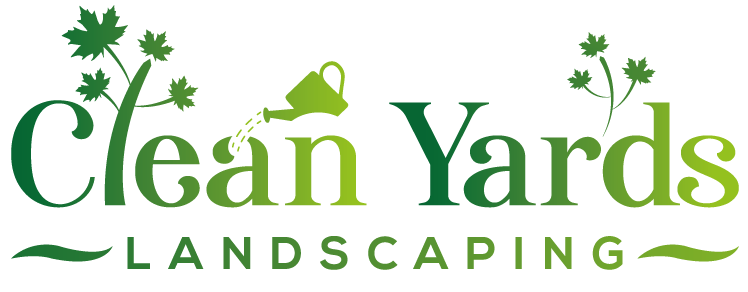Kars Fall Grading: Stop Spring Water Damage Before It Starts
Quick Summary
- Spring water problems (soggy lawns, puddles near foundation) are common in Kars and the Ottawa area due to snowmelt, frozen ground, and clay soil.
- **Landscape grading** involves shaping the land to direct water *away* from your house (positive slope).
- **Fall** is the ideal time for grading: workable soil, less stress on plants, allows settling before spring.
- Minor grading *away* from the house might be DIY, but foundation slopes or significant issues require professionals.
- Eco-friendly options like rain gardens and native plants enhance drainage.
- Proper grading prevents foundation damage, improves lawn health, and makes your yard more usable.
Experiencing drainage issues? Request a professional assessment today!
Introduction: Kars, Kiss Spring Soggy Blues Goodbye!
Hello Kars neighbours! Are you already dreading next spring’s inevitable lawn-turned-lake situation? We get it. Across the Ottawa region, from nearby Manotick right here to Kars, spring often means battling soggy spots and wondering if your gardening boots will ever truly dry out. It’s frustrating, looks messy, and honestly, all that standing water isn't great for your lawn *or* your home's foundation. It's hard to enjoy your landscape when you need rubber boots just to cross it!
But here’s a little secret from the landscaping world: the *best* time to tackle next spring's water problems is *this fall*. Think of it as preventative medicine for your yard! Fall grading allows us to gently reshape the land, improving drainage *before* the ground freezes and the snow flies. By ensuring water flows *away* from your house and doesn't pool in low spots, we're setting the stage for a less swampy, much happier spring. Ready to improve your lawn care game and ditch those soggy blues for good? Let's talk grading!
The Soggy Truth: Understanding Spring Water Woes in Ottawa & Surrounds

Ah, spring in Ottawa! The tulips pop, the birds sing... and your lawn turns into a mini-swamp. Sound familiar? You're not alone! Spring is prime time for water woes across our region, from Greely to the heart of the city, and understanding *why* is the first step to fixing it.
So, why does spring seem determined to drown our yards? It’s kind of a perfect storm, really. First, we have the great melt-off – all that lovely snow turns into a *lot* of water. At the same time, the ground underneath is often still partially frozen or completely saturated from winter, meaning the water has nowhere to go. Add in those classic spring showers, and *voilà* – instant pond where your prize-winning petunias used to be. This freeze-thaw cycle doesn't just create surface water; it can also heave soil, potentially damaging walkways and driveways over time.
Making things trickier is our local soil. Much of the Ottawa area, including neighbourhoods like Richmond, is blessed (or cursed, depending on your perspective!) with heavy clay soil. Clay particles are tiny and packed tightly, meaning water drains through them *very* slowly. Instead of soaking in quickly, water tends to sit on top, leading to those persistent puddles and soggy patches that ruin lawn care efforts and make mowing impossible. In areas like Greely, which are known for a naturally higher water table, these spring drainage challenges can be even more pronounced.
What kind of soggy situations are we talking about? Common problems include:
- Lawns that squish underfoot days after rain.
- Persistent puddles near your home's foundation (a big no-no!).
- Waterlogged garden beds that drown your plants.
- Mushy spots that seem impossible to grow healthy grass on.
- Washed-out mulch or soil erosion on slopes.
Ignoring these signs can lead to bigger headaches, like foundation leaks or basement flooding. That’s why preventing water damage through site grading in Richmond and similar areas is so crucial. Proper grading ensures water flows *away* from your home and sensitive landscaping areas. Thinking ahead is key; consider taking fall grading action in Russell to stop water damage *before* the snow even flies. For a deeper dive into solutions, check out this comprehensive Embrun drainage and site grading guide. Understanding how Embrun site grading can prevent spring water damage gives you powerful tools for a drier yard. If this all sounds a bit much, don't worry – professional help is available to assess your specific situation and recommend the right solutions; feel free to explore our landscaping and grading services.
Problem: Surface Pooling
Excess water sits on the lawn or garden beds, creating muddy areas, killing grass, and making the yard unusable. This is often due to compacted soil, low spots, or poor overall drainage.
Problem: Foundation Risk
Water collecting near the house foundation (often due to negative slope) puts hydrostatic pressure on walls, potentially leading to cracks, leaks, basement dampness, and costly structural repairs over time.
Problem: Soil Issues
Heavy clay soil, common in the Ottawa region, drains very slowly. During spring melt or heavy rain, saturated clay prevents water from soaking in, worsening surface pooling and potentially causing soil heaving.
What Exactly IS Grading? (Hint: It’s Not Just for School Papers!)

Okay, let's ditch the red pens and report cards. When we talk about *grading* in the landscaping world, we're not worried about your spelling (phew!). Instead, we're talking about shaping the land itself.
Think of your yard like a giant, very slow-moving sandbox. Grading is the process of carefully sculpting the soil surface to control where water goes. It’s about creating gentle slopes – sometimes so subtle you barely notice them – to guide rain and melting snow away from important areas, especially your house foundation. It's less about making things perfectly flat (which can actually *cause* drainage problems!) and more about smart, intentional shaping. Poor grading is often a hidden culprit behind soggy lawns and even damp basements, a common headache for homeowners across Ottawa.
So, how does this slope stuff work? It boils down to two main types:
- Positive Slope: This is the hero of our story! A positive slope means the ground angles *downhill and away* from something, like your house foundation. Imagine pouring water next to your house – with a positive slope, it flows outwards, away into the yard or towards a designated drainage area. This is *exactly* what you want around your home’s perimeter. It keeps water from pooling against the foundation walls, protecting your basement or crawl space from moisture damage, cracks, and the dreaded musty smell. Achieving this perfect slope is a key part of many of our expert landscaping services.
- Negative Slope: This is the sneaky villain. A negative slope means the ground angles *downhill and towards* your foundation. Uh oh. Water follows gravity, so a negative slope directs rain and meltwater right *to* your house, creating a welcoming moat for potential leaks and foundation problems. If you see puddles consistently forming near your house after rain, you likely have a negative slope issue. This is something we often address during yard cleanup and grading support in Greely and surrounding areas where clay soil can exacerbate drainage issues.
Why is this so crucial? Your home's foundation is, well, *fundamental*. Constant moisture pressing against it can lead to cracks, leaks, mould growth inside, and costly repairs down the line. Proper grading is your first line of defence, ensuring water takes the path of least resistance *away* from your home. It’s essential preventative maintenance. Fixing grading issues often involves carefully adding or removing soil to create that gentle, positive slope. Sometimes, this might mean re-evaluating the entire lawn area, which could lead to needing professional sod installation for a finished look once the grading is corrected.
Ignoring grading problems doesn't make them go away; it usually just makes them worse (and wetter!). Keeping your property well-graded is a core part of overall yard health, just like regular mowing or seasonal cleanups. If you suspect grading issues, it’s worth getting them checked out. Whether you need basic tidying or more involved slope correction, our comprehensive Ottawa yard cleanup services can help assess the situation. Residents in nearby communities can also find tailored help, like our Metcalfe yard cleanup and grading solutions. Proper grading isn't just about aesthetics; it's about protecting your biggest investment – your home! Learn more about our approach on our Google Business Profile.
Fall is Calling: Why Autumn is the GOLDEN Time for Grading in Kars

Hey Kars neighbours! Thinking about fixing those annoying puddles or that slightly-too-close-for-comfort slope towards your house? While you might instinctively think spring is the time for all things yard-related, let us let you in on a little secret: autumn is actually the *golden* season for landscape grading around here. Seriously, Mother Nature practically rolls out the welcome mat for it!
So, why is fall the superstar season for shaping your land? Let's dig in:
- The Soil Sweet Spot: Remember trying to wrestle with that hard, baked clay soil back in July? Or sinking ankle-deep in the spring mud-fest? Fall often presents the perfect compromise. The soil in Kars and nearby communities like Manotick is typically *just right* – moist enough to be workable but not so saturated that heavy equipment creates a muddy disaster zone. This "Goldilocks" condition makes it easier to achieve precise slopes for optimal drainage without compacting the soil excessively. Proper soil preparation is key.
- Happy Plants = Happy Yard: Let's face it, grading involves moving dirt around, and that can be a bit disruptive for your lawn and garden plants. Tackling grading in the fall gives your turf, shrubs, and perennials plenty of time to recover and settle in before the ground freezes. They're heading into dormancy anyway, so the stress is much lower compared to disrupting them during their active spring growth spurt or the scorching summer heat. It also pairs perfectly with other autumn tasks; while we're there, consider tidying up beds with a fall garden clean-up service like those offered in nearby Metcalfe to give everything a neat finish before winter.
- Time to Settle In: Freshly graded soil needs time to settle naturally. Think of it like letting bread dough rest. Grading in the fall allows the natural freeze-thaw cycles of a Kars winter, along with rain and snowmelt, to gently compact the soil over several months. This means fewer surprises (like unexpected low spots appearing) come springtime. Your yard will be more stable and truly ready for planting or enjoying when the warm weather returns, setting the stage perfectly for that new dream garden installation you might be considering for next year.
- Spring Ahead (Without the Swamp!): This is the biggest win! Grading in the fall means your yard is *prepared* before the spring onslaught of melting snow and heavy rains even begins. That improved slope will immediately start directing water away from your foundation and preventing those swampy patches we all dread. Imagine a spring where you can actually walk on your lawn without needing rubber boots! It’s proactive protection for your property and a key part of an effective seasonal property clean-up and maintenance plan.
- Why Fall Beats the Rest: Spring grading often means fighting wet, unstable ground and rushing before the prime growing season. Summer grading involves battling hard, dry soil and potentially stressing plants during hot weather. Fall neatly sidesteps these issues. It's often more efficient too, as grading can be combined with other essential autumn work, like leaf removal. Many homeowners find that bundling services, such as incorporating grading prep into a comprehensive Metcalfe yard cleanup service package, saves time and hassle.
The Window of Opportunity:
Typically, the best time for fall grading in the Ottawa region, including Kars, is from September through late October, sometimes stretching into early November depending on the weather. The key is to get it done *before* the ground freezes solid. Planning ahead is recommended, as schedules can fill up. And naturally, before committing to any significant landscaping project, it’s always a good idea to understand the process and expectations by reviewing the provider's service terms and conditions.
So, listen to the call of autumn! Getting your grading done now sets you up for a drier, healthier, and happier yard next spring. Need inspiration? Check out some local landscaping transformations!
Ideal Fall Grading Process
Mid-Fall (Sept-Oct)
Perform grading work while soil is workable. Adjust slopes, add necessary soil (material selection is key).
Late Fall (Oct-Nov)
Apply topsoil, seed/sod if needed (dormant seeding). Combine with final property cleanup.
Winter
Allow natural settling through freeze-thaw cycles. Water is directed away even under snow cover.
Spring
Enjoy reduced sogginess! Water flows correctly, protecting foundation and lawn health.
DIY Patch-Up or Call in the Pros? Grading Your Kars Property
Alright, Kars neighbours, let's talk turkey... or rather, let's talk dirt! You've noticed a soggy spot or two, maybe your lawn slopes a bit funny. The big question is: can you tackle this yourself with a shovel and some weekend warrior spirit, or is it time to call in the landscaping cavalry? Grading might sound simple, but getting it wrong can turn a small puddle into a big problem. Let's help you assess the situation.
Playing Detective: A Quick DIY Grade Check
Before you grab that shovel, put on your detective hat. Here’s how to do a basic assessment:
- The Rain Dance (Observation): The best time to spot issues is during or right after a good rain. Where does the water go? Does it flow *away* from your house foundation, or does it seem to collect nearby? Puddles lingering near your home for more than a day are a red flag. Check reliable local forecasts like Environment Canada Ottawa.
- The Eyeball Test: Stand back and look at the land around your house. Can you visually see a gentle slope leading *away* from the foundation on all sides? Even a slight downhill slant towards your house (negative slope) is cause for concern.
- String Theory (Optional Simple Check): For a slightly more technical check, grab two stakes and a long string with a line level (you can get these cheap at hardware stores). Pound one stake near your foundation and the other further out in the yard where you want water to flow. Tie the string tightly between them, attach the level, and see which way the bubble goes. If the string slopes down *away* from the house stake when level, that’s good! If it slopes *towards* the house stake, you likely have a negative slope.
Tiny Tweaks You *Might* DIY (Proceed with Caution!)
If your detective work reveals only *very minor*, isolated low spots *far away* from your foundation (like a small dip in the middle of the lawn that collects water), you *might* be able to tackle it.
- Small Low Spot Fill: For a shallow depression out in the open yard, you can try gradually adding small amounts of good quality topsoil mixed with compost over time, letting the grass grow through each layer. This helps maintain healthy lawn care by improving surface drainage in that specific spot.
- Important Caveat: We really mean *tiny* and *isolated*. Never try to change the slope directly beside your foundation yourself. Adding soil incorrectly there can create a bridge for moisture right into your basement or crawlspace. Seriously, don't do it!
DIY vs. Professional Grading: The Showdown
| Feature | DIY Grading (Tiny Fixes Only) | Professional Grading |
|---|---|---|
| Cost | Low (Materials like topsoil) | Higher (Labour, expertise, equipment) |
| Time | Your precious weekend(s) | Generally much faster completion |
| Skill/Knowledge | Basic gardening skills | High (Slope math, soil science, drainage solutions) |
| Equipment | Shovel, wheelbarrow, rake | Transit levels, laser levels, potentially heavy equipment |
| Best For | Tiny, isolated low spots *away* from foundation | Negative slopes, foundation issues, large areas, complex drainage, heavy clay soil |
| Risks | Making drainage worse, damaging foundation if done incorrectly | Low (with a reputable company – always understand their process and review their terms and conditions) |
When to Holler for Help
Honestly? For most grading issues beyond filling a tiny bird bath-sized dip in the lawn, calling a professional is the smarter, safer bet. Definitely call for backup if:
- You see water pooling near your foundation.
- You have a clear negative slope towards your house.
- Large areas of your lawn are constantly soggy.
- Your property has significant slopes or complex terrain.
- You're dealing with heavy clay soil, common in areas around Ottawa like Osgoode and Metcalfe. Clay requires specific knowledge to grade effectively without causing compaction or other issues. See info from City of Ottawa on drainage.
Professionals have the right equipment (like transit levels for precise measurements) and the know-how to ensure water flows exactly where it should. It’s about protecting your biggest investment! Think of it as part of your overall property maintenance, similar to scheduling an Ottawa property cleanup service – sometimes, you need the experts. We at Clean Yards have seen it all and know how to handle the unique challenges of local soil conditions. You can learn more about us and our commitment to quality work.
Don't risk making a soggy situation worse or potentially damaging your foundation. If you're unsure or dealing with anything more than a minor lawn dip, please contact us. We’re happy to take a look and provide professional advice for your Kars property.
Grade Smarter, Not Harder: Eco-Friendly Drainage Solutions

Okay, so you've mastered the art of the gentle slope, thanks to smart grading! Water is now politely heading *away* from your house foundation. Brilliant! But where does it go next? Does it just sheet off into the street, potentially carrying away topsoil or bothering your neighbours down in Barrhaven? Hold on a sec – instead of just sending water packing, let's get clever and make that runoff work *for* your landscape, not against it. Grading smarter means thinking green!
Let's dive into some fantastic, earth-friendly ways to manage water on your property:
- Rain Gardens: Picture this: a beautiful, slightly sunken garden bed filled with water-loving plants native to the Ottawa region. That's a rain garden! It acts like a natural sponge, collecting rainwater from your roof, driveway, or lawn and allowing it to slowly soak into the ground. It's gorgeous, great for pollinators, and fantastic at reducing runoff. Success hinges on getting the base right, which involves careful soil preparation to ensure proper infiltration. Check resources like the Rideau Valley Conservation Authority for guidance on water management.
- Bioswales: Think of a bioswale as a rain garden's long-lost cousin, often shaped like a shallow, vegetated channel. It's designed to slow down water flow, filter out pollutants naturally (goodbye lawn chemicals!), and encourage water absorption as it moves across your property. They can be beautifully integrated into landscape designs, maybe along a property line.
- Permeable Pavers: Planning a new patio, walkway, or driveway extension? Consider permeable pavers! Unlike traditional solid surfaces that create tons of runoff, these clever pavers have small gaps filled with gravel, allowing rainwater to trickle right through into the ground below. Less puddling, less runoff – it's a win-win.
- Embrace Native Plants: Choosing plants that naturally thrive right here in Eastern Ontario, from Richmond to Russell, is one of the smartest landscaping moves you can make. Native species are already adapted to our climate and rainfall patterns, meaning they often require less watering and fuss once established. They’re champs at handling local soil conditions and provide food and shelter for local wildlife. Incorporating natives can significantly simplify your garden maintenance routine too. Consider adding mulching and edging to define these areas.
Why go eco? These solutions do much more than just manage water. They help filter contaminants before they reach precious local waterways like the Rideau River, reduce the strain on municipal storm sewers, help recharge groundwater levels, and create beautiful, functional habitats in your yard. Plus, strategically using rain gardens or native plant beds can reduce the amount of thirsty turf you need, potentially lowering your overall lawn care efforts. Thinking about clearing an area for a rain garden? A service like our Metcalf property cleanup service can help prepare the space. When discussing these options for your property, rest assured we handle your project details responsibly, reflecting the commitment outlined in our privacy policy. Working *with* nature to manage water isn't just trendy; it's effective, sustainable, and makes for a healthier, more resilient landscape.
Typical Drainage Improvement Impact
*Illustrative percentage improvement after proper fall grading.
Key Insights: Your Fall Grading Cheat Sheet
Think of this as your quick guide to saying "adios!" to soggy lawns and "hello!" to a happier foundation.
- Why Bother? (The Soggy Bottom Line): Proper grading is *crucial* for guiding water *away* from your house, protecting your foundation, and preventing swampy lawns.
- Grading 101 (Slope School): Aim for a *positive slope* (away from the house) and fix any *negative slope* (towards the house).
- Fall = Grading Gold: Autumn offers ideal soil conditions, less plant stress, and time for settling before spring.
- Tiny Puddle vs. Total Swamp: DIY *might* work for tiny, isolated spots *far* from the foundation. For anything near the house or major issues, call the pros.
- Combine & Conquer: Fall grading pairs well with other autumn tasks like leaf removal. Consider bundling services like a Metcalf property cleanup service.
- Think Beyond the Slope: Eco-solutions like rain gardens manage water beautifully and benefit the environment.
- Get Inspired! See the difference professional work makes in our gallery or transformations section.
- Aim for a Tidy Finish: A well-graded yard looks best when clear of debris. Combine grading with a Marionville yard cleanup service for a clean slate.
- Holistic Yard Care: Consider a full Marionville property cleanup service for comprehensive seasonal prep.
Grading in the fall is your secret weapon for a drier spring!
FAQs: Answering Your Kars & Ottawa Grading Questions
That's a great question! The time needed really depends on the size of the area we're working on and how much reshaping is involved. For a smaller, straightforward lawn grading job in, say, Barrhaven or Kars, it might only take a day or two. More complex projects, like dealing with severe slopes or large properties needing significant soil work, could take longer. We also have to factor in good ol' Ottawa weather – heavy rain can cause delays. We always aim to work efficiently to minimize disruption to your routine!
We totally understand your concern – you love your plants! Honestly, grading does involve moving soil, so there will be some temporary disruption to the immediate area being worked on. Think of it like renovating a room inside; there's a bit of controlled chaos before the beautiful result. We do our best to minimize the impact on surrounding landscaping. Often, the graded area will need new topsoil and seeding or sodding afterwards to establish a healthy lawn. Any affected garden edges might need tidying up, similar to the work involved in our Ottawa garden clean-up service. The good news is, fixing drainage problems now protects those beloved gardens from being drowned later!
Absolutely, it matters *a lot*! Using the right soil is key to successful grading and long-term lawn health. We don’t just use any random fill dirt, which can be full of rocks, debris, or unsuitable clay. We use appropriate fill soil to establish the main grade, ensuring it compacts properly without creating a barrier to water movement. Then, we typically finish with a layer of high-quality topsoil or triple mix, which provides the nutrients your grass or garden plants need to thrive. Proper material selection for landscaping projects is crucial for ensuring good drainage and healthy growth – it’s the foundation of a great finish!
Generally, for typical residential lawn grading on your own property – like fixing minor slopes around your foundation – you *usually* don't need a specific grading permit from the City of Ottawa. However, rules can get more complex if the work involves significantly changing drainage patterns, affecting neighbouring properties, building large retaining walls, or working near environmentally sensitive areas or waterways (like the Rideau River near Manotick). It's always wisest to double-check with the City or discuss with your contractor if you're planning major changes, just to be safe and ensure everything is above board.
Ah, the million-dollar question (hopefully not literally!). The cost of grading varies quite a bit because every property is unique. Key factors influencing the price include: the size of the area needing grading, how severe the existing slope or drainage problem is, how easy it is to access the area with equipment, the amount and type of new soil needed, and whether seeding, sodding, or other finishing touches are included. Think of it as an investment in protecting your home's foundation from costly water damage and improving your property's usability and appearance. While we can't give a flat rate here, we provide detailed quotes after assessing your specific situation. You can get a feel for the quality results by checking out examples of our completed landscaping work in the gallery or check our customer portal if you're already a client.
That's a common headache in neighbourhoods where properties are close together! Grading *on your property* can definitely help manage the water *once it reaches your yard*. We can create gentle slopes or features like shallow swales (vegetated channels) to guide that incoming water away from your foundation and towards a better drainage point, like the street or a back corner. However, grading on your property generally can't create a dam to *block* water flowing naturally downhill from a neighbour. Sometimes, improving drainage along the property line, perhaps combined with strategic gardening beds prepared similarly to how we approach a seasonal Marionville garden clean-up service, can help capture and redirect some of that surface flow effectively on your side.
Conclusion: Grade Your Way to a Dryer Spring in Kars
So, let's wrap this up, Kars friends! We've dug into why spring can turn your yard into a mini-lake and how smart *landscape grading* is your best defence. Remember, creating that gentle slope away from your foundation isn't just about a prettier lawn or easier gardening; it's about protecting your home from water damage. And the *golden* time to tackle this crucial task? Right now, this fall! The soil's cooperative, your plants are less stressed, and you get way ahead of next year’s inevitable melt and rain. Imagine – a spring where you can actually enjoy your property without needing oversized rubber boots!
Whether you’re right here in Kars, over in nearby Vernon, or anywhere across the Ottawa region, don't spend another spring battling soggy spots and worrying about your foundation. Let Clean Yards help you improve your property's *drainage* this autumn. Ready to trade the squish for solid ground and peace of mind? Say thank you to soggy springs!
- Contact us today for a friendly chat about your specific situation.
- Ask about a free assessment for your Kars property – we'll take a look!
- Let's get your fall grading scheduled and ensure a much dryer spring ahead!
Give us a shout – we're eager to help you grade your way to a happier, drier landscape!

